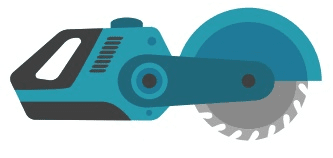20 Trailblazers Lead The Way In Mitresaw

Understanding the Mitre Saw: A Comprehensive Guide
When it concerns woodworking and construction, precision is crucial. One tool that stands out for its ability to provide precision in cutting angles is the mitre saw. This versatile tool is an important part of many artisans's toolkit, whether they are dealing with small home projects or large restorations. This article intends to explore the mitre saw's functionality, types, features, and how to choose the best one for your needs.
What is a Mitre Saw?
A mitre saw, also called a chop saw or drop saw, is a power tool used to make exact crosscuts and mitre cuts in woodworking. Mitre saws can cut information at different angles, which makes them highly versatile for various tasks, such as framing, molding, and furniture-making.
How Does a Mitre Saw Work?
Mitre saws utilize a circular saw blade mounted on a swinging arm. The user positions the workpiece against the fence and reduces the blade down onto the material at the desired angle, resulting in a clean cut. The ability to lock the blade in place while cutting guarantees precision.
Kinds Of Mitre Saws
Mitre saws come in a number of versions, each developed for specific functions. Here are the most typical types:
| Type | Description | Best For |
|---|---|---|
| Requirement Mitre Saw | Fundamental model developed for making straight cuts or mitre cuts. | General crosscutting jobs. |
| Compound Mitre Saw | Functions the capability to tilt the blade for bevel cuts in addition to mitre cuts. | Crown molding and angled cuts. |
| Dual Compound Mitre Saw | Combines the functions of a compound mitre saw, allowing bevel cuts on both sides. | Complex angles and trim work. |
| Sliding Mitre Saw | Integrates a sliding system to increase cutting width and capacity. | Wider products such as lumber. |
| Digital Mitre Saw | Features digital screens for much better precision in angle measurements. | Precision-sensitive tasks. |
Choosing the Right Mitre Saw
Choosing the ideal mitre saw depends mostly on the type of projects you plan to carry out. Here are some aspects to consider:
- Type of Cuts Needed: Determine if you need just straight cuts, or if you need to make bevel cuts too.
- Size of Material: If you normally work with wider pieces, a sliding mitre saw will provide more capacity.
- Portability: If you need to transport your saw regularly, a lightweight model would be required.
- Power and Speed: Higher amperage shows more powerful saws, however it's vital to stabilize power with maneuverability.
- Price: Mitre saws come in different price varieties. Examine your budget plan while guaranteeing you do not sacrifice necessary features.
Important Features of a Mitre Saw
When choosing a mitre saw, certain features can greatly boost the user experience and precision of cuts:
- Laser Guide: Projects a line onto the product, making sure accurate cuts.
- Bevel Adjustment: Allows fast and simple angle modifications for bevel cuts.
- Dust Collection: Built-in features help handle sawdust and enhance exposure and cleanliness.
- Fencing System: A robust fence guarantees accurate guidance while cutting.
- Weight and Portability: Lighter saws are easier to move, while heavier ones usually provide more stability.
Utilizing a Mitre Saw Safely
Security is critical when using any power tool, including mitre saws. Here are some necessary security tips:
- Always use appropriate personal protective equipment (PPE), consisting of safety glasses and hearing defense.
- Make sure the saw is firmly attached to a stable surface area to avoid motion throughout cutting.
- Keep hands at a safe distance from the blade and dissuade others from standing close.
- Routinely check blades for sharpness and replace them when needed.
- Make sure the electrical connections are safe and secure, and avoid cutting in damp conditions.
Frequently Asked Question About Mitre Saws
Q1: Can I utilize a mitre saw for cutting metal?
A: While some mitre saws can be adapted with unique blades for cutting metal, it's primarily designed for wood. Constantly check the maker's specs.
Q2: What blade size should I use for my mitre saw?
A: Common blade sizes are 10-inch and 12-inch. The size you require depends upon the density of the material being cut.
Q3: How typically should I alter the blade on my mitre saw?
A: Blade life varies based upon use. www.powertoolsonline.uk and replace it if it shows signs of dullness or damage.
Q4: Can I make compound cuts with a standard mitre saw?
A: No, only compound and double compound mitre saws permit bevel cuts in addition to mitre cuts.
Q5: What is the difference in between a sliding mitre saw and a compound mitre saw?
A: Sliding mitre saws have a slide system that extends the cutting capacity, while compound mitre saws can only tilt for angled cuts.
The mitre saw is a vital tool for anybody seeking to boost their woodworking projects with precision and ease. With numerous types, functions, and security precautions to think about, comprehending this tool empowers users to make informed decisions customized to their particular requirements. Whether you are a seasoned professional or simply starting, a mitre saw can substantially raise your workmanship. By putting in the time to pick the best design and practicing precaution, you can ensure an effective woodworking journey.

